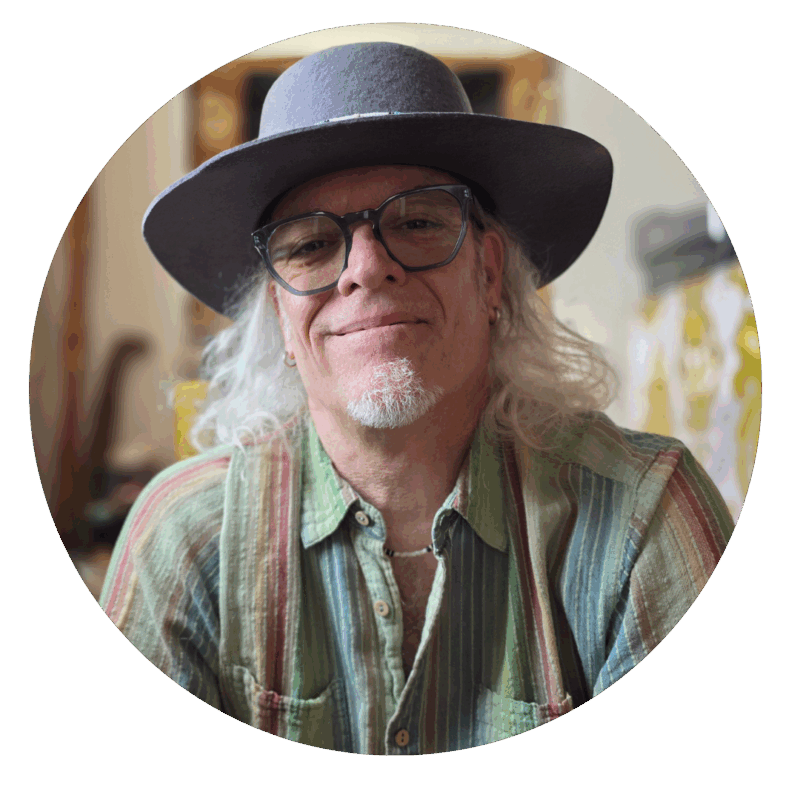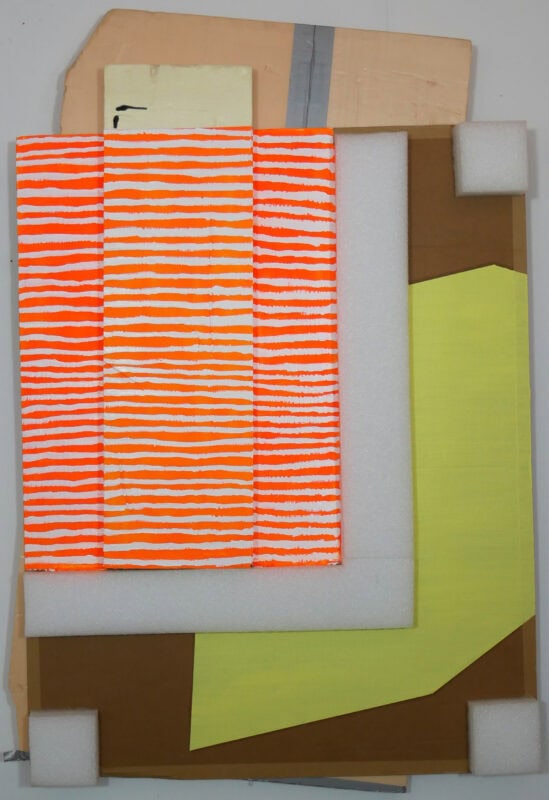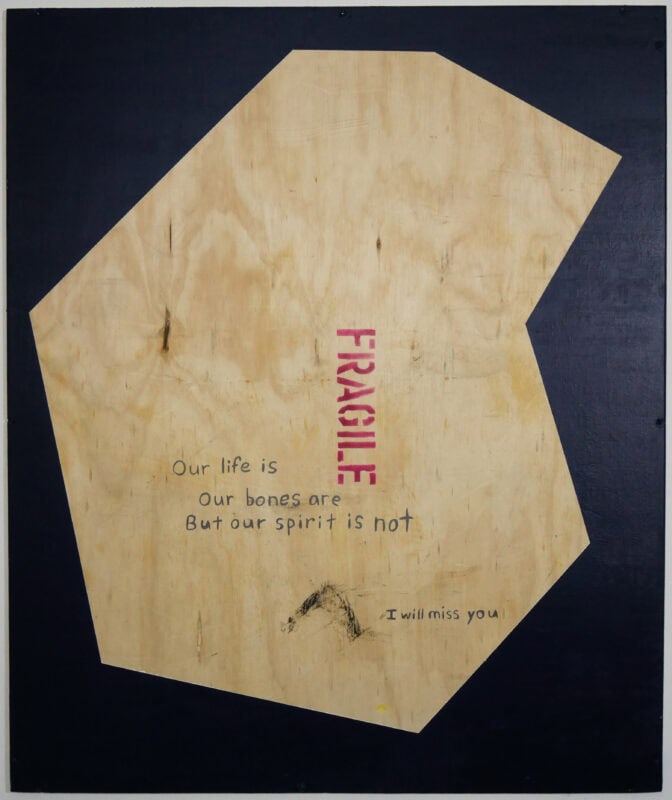
Meikle Gardner is a multidisciplinary artist whose work bridges fine art, environmental consciousness, and narrative reclamation. Born in Oklahoma and raised in Texas, Gardner developed his artistic voice through a lifelong dedication to inquiry—studying painting, philosophy, and religion at the University of North Texas before earning his MFA in painting at the Memphis College of Art. Over the decades, he has cultivated a practice that balances material exploration with conceptual depth, challenging traditional hierarchies of what art can be and what it should come from.
In 2014, Gardner made a radical shift—he stopped painting on traditional canvas. Instead, he turned his attention to the discarded materials of his own fine art service business: foam, cardboard, crate panels, and tape. These remnants became the core of his practice. His series Reclamations transforms packing waste into layered compositions that are at once sculptural and painterly, elevating the overlooked into objects of contemplation and aesthetic value.
Gardner’s practice is philosophical at its core—his works are visual meditations on consumption, sustainability, and the hidden systems that underpin the art world. Yet they retain a sense of playfulness and improvisation, with gestures that feel urgent, expressive, and raw. His approach is both deeply personal and culturally critical.
Now based in Brooklyn, Gardner continues to expand his practice as a visual artist, writer, editor, and musician—releasing multiple albums under the name Souvenir Satellite and publishing his first novel The House in 2023. Whether working with words, pigments, or sound, Gardner is united by a singular vision: to make visible the stories buried within the everyday.
Currently Exhibiting in: Bushwick, Brooklyn
Web: thevoid.nyc
Instagram: @meikle_gardner_studio_artist
Gardner’s work calls into question the notion of permanence in art. By using impermanent and fragile materials, he draws attention to the ephemerality of value—cultural, artistic, and environmental. His paintings and constructions, often dimensional and weighty in form, are paradoxically about lightness: the lifting of burden through reimagination.
The ethos behind Reclamations is not simply ecological—it’s poetic. Each work is a material elegy, a record of transformation. Through texture, tactility, and reuse, Gardner crafts a visual language that critiques the systems of production while revealing the overlooked beauty embedded in them.
Featured Artwork at Bushwick Gallery
LemonJelly
Year of Creation: 2019
Medium: Acrylic and oil on packing foam, cardboard, insulation foam, and duct tape
Dimensions: 57 x 38 x 5 inches
Edition Type: Unique, 1 of 1
Location: Brooklyn, NY
Price: $3,500
Description
LemonJelly is an arresting exploration of form, texture, and contradiction. Its brightly hued surface is offset by the tension of industrial materials—duct tape, foam, and cardboard—evoking a sense of fragility beneath a seemingly playful exterior. The work pulses with a vibrant urgency, inviting reflection on the discarded and the reborn.

Fragile
Year of Creation: 2018
Medium: Acrylic and graphite on wooden shipping crate panel
Dimensions: 41.75 x 34.75 x 1.5 inches
Edition Type: Unique, 1 of 1
Location: Brooklyn, NY
Price: $2,500
Description
In Fragile, Gardner allows the rawness of the material to speak. Graphite lines intersect with worn wood and acrylic gestures, creating a work that feels unearthed rather than constructed. This piece is less a painting and more a conversation between artifact and artist—a meditation on what we handle, preserve, and too often discard.

Exhibition Information
May 2025: Echoes of the Earth – Environmental Art
Curated by: Mekhi Deleon
Theme: Exploring the intersection of art and environmentalism, advocating for the planet through eco-art and other mediums.
Exhibition Dates: May 1 – May 8, 2025
Opening Reception: Thursday, May 1 | 6 PM – 8 PM
(for accessibility: full transcript below)
It invites us to reconsider the hierarchies we place on objects, and by extension, on ourselves.
Step into LemonJelly, and you step into a conversation about permanence and impermanence.
Meikle Gardner constructs with intention: foam, cardboard, tape—materials designed for transit, for protection, for disappearance. Here, they resist their fate.
Layers of neon rhythm and muted decay sit side by side, asking: what does it mean to be valued? To be preserved?
In Gardner’s hands, the castoff becomes artifact, the temporary becomes monumental.
LemonJelly pulses not just with color, but with memory—of movement, exchange, and quiet reinvention.